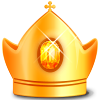-
-
1我有个很好很好的以色列网友,所以想学学这个~
-
0Why did the Hebrews exile take place and why ois the peroid after it so important?
-
4Hebrew is a hard language
-
2有学这个的吗?给我pm.也许有惊喜哦.呵呵.
-
0操作系统是中文的
-
0谢谢楼主的无私奉献 我们有一群人在学习哦 感谢主啊 可以用中文,吧主介意吗 多一些讨论的内容,可以嘛?
-
0Adot placed in a consonant is called "Dagesh" There are two types of dagesh: 1. -light dagesh 2. -strong dagesh A.The comes only in the consonants It changes the soft(spirant)sound of these consonants to a hard (stopped)one. In odern Hebrew the affects the pronunciation only of the consonants . The are pronounced identically with or without the When the consonants come at the beginning of aword or at the beginning of a syllable, a is placed in them.* B.the may come in any consonant except in the guttirals and the . The denotes the doubling of the consonant in whi
-
0In order to facilitate the pronuncition of the mobile Sheva when it comes under the guttural consonants ( ), the Sheva is aided by an auxiliary vowel,either or The composite Shevas are called: The "G"and "G". However, in case of "G", it is pronunced like "o". Also note that any Preceding a is proniunced like a : -Tsohorayim.
-
0When the Sheva ( )comes at the beginning of a word,or a syllable,it is pronounced like a semi "e".It is called Sheva Nah ( ),quiescent Sheva.E.g., When there are two consecutive Shevas in a word,the first is quiescent and the second is mobile. A Sheva following one of the long vowels is mobile.
-
0SHORT LONG At present,the division between long and short vowels does not represent a difference in pronunciation,except for the and which is distinguished in pronuncition by many Hebrew speakers.However,the knowledge of the division between long and short vowels will be of help in clarifying certain grammatical phenomena. -------- * In a limited number of instances,the is pronounced as ,in which case it is called . During the course of the study of the grammar,these instances will be clarified.
-
0If there is dot above or in the middle of the Vav ( ), following an unvocalized consonant, than the Vav ( )has no consonantal value. It serves as a vowel letter for the preceding consonant. When a Tod ( )has no consonantal value. It merely serves to lengthen the vowel .
-
0tsere patah kamatz kubbutz holam seggol hiriq shuruk
-
0***|oo-food |o-more |**e-eve |e-end |ai-rain |a-air |*a-car *Some pronounce this vowel similarto "a" as in "ape". **Pronounced more like the French "i" as in "dit". ***At the end of a syllable it is silent,but pronounced like a semi "e" at the begining of a syllable All the vowel signs,except for two ( ) ,are placed below the consonants.
-
01.The following five consonants, have a modified form when they com at the end of a word: 2.Each of the following pairs of consonants, is nowadays pronounced identically by most Hebrew speakers. However,originally each of these consonants had its own distinct pronunciation which is still preserved by some non-Ashkenazic Jews.
-
0Numerical Value Transcription Name -------------------------------------------------------- 1 , ,Aleph 2 B Bet V Vet 3 G(Get) Gimmel 4 D Dalet 5 H He 6 V Vav 7 Z Zayin 8 H Het 9 T Tet 10 Y(You) Yod 20 K Kaph Kh Khaph 30 L Lamed 40 M Mem 50 N Nun 60 S Samekh 70 " "Ayin 80 P Pe F Phe 90 Ts Tsadi 100 Q Qof 200 R Resh 300 Sh Shin S Sin 400 T Tav



